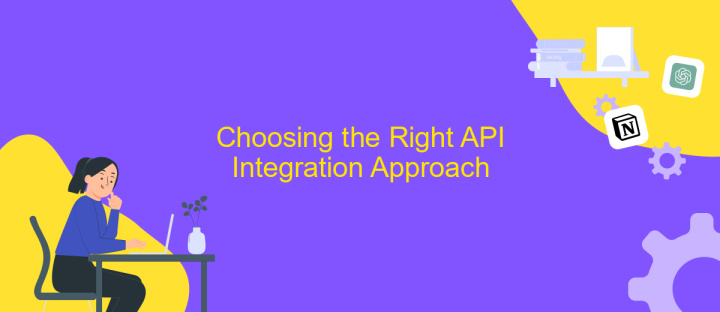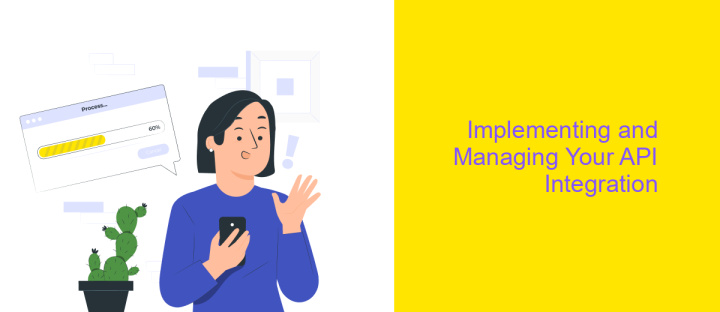Business API Integration
In today's rapidly evolving digital landscape, businesses are increasingly turning to API integration as a strategic tool to enhance operational efficiency and drive innovation. Business API integration enables seamless communication between disparate systems, streamlining processes and fostering collaboration. By leveraging APIs, companies can unlock new opportunities for growth, improve customer experiences, and stay competitive in a technology-driven market. This article explores the transformative impact of API integration on modern businesses.
Understanding Business API Integration and its Benefits
Business API integration is a crucial process that enables different software systems to communicate and work together seamlessly within an organization. By utilizing APIs, businesses can streamline operations, enhance data exchange, and improve overall efficiency. This integration allows companies to leverage existing services and functionalities without the need for extensive redevelopment, thereby saving time and resources.
- Improved operational efficiency through automated workflows.
- Enhanced data sharing and collaboration across platforms.
- Reduced development costs by reusing existing services.
- Faster time-to-market for new products and services.
- Scalability to accommodate business growth and technological advancements.
Integrating APIs into business processes not only optimizes internal operations but also opens up new opportunities for innovation and customer engagement. As businesses continue to evolve in the digital age, leveraging API integration becomes increasingly vital for maintaining competitiveness and fostering growth. By understanding and implementing effective API strategies, companies can unlock new potentials and drive their business forward.
Key Considerations for Successful API Integration

When embarking on an API integration project, understanding the business objectives is paramount. Clearly define what the integration aims to achieve, whether it's enhancing data flow, improving operational efficiency, or expanding service offerings. This clarity will guide the selection of APIs and inform the integration strategy. Additionally, consider the compatibility of the APIs with existing systems. Evaluate the technical requirements and ensure that the chosen APIs align with your current infrastructure to prevent unnecessary complications.
Security is another critical consideration. Protecting sensitive data should be a top priority, so ensure that the APIs support robust authentication and encryption methods. Furthermore, testing is essential for successful integration. Conduct thorough testing to identify potential issues before deployment. Tools like ApiX-Drive can simplify the integration process by providing a user-friendly platform that connects various services without extensive coding. By leveraging such tools, businesses can streamline API integration, reduce errors, and focus on achieving their strategic goals. Ultimately, careful planning and execution are key to unlocking the full potential of API integration.
Choosing the Right API Integration Approach

Choosing the right API integration approach is crucial for seamless business operations. The decision should be based on several factors, including the specific needs of your business, the complexity of the API, and the resources available. A well-thought-out approach ensures that the integration is efficient, scalable, and maintainable, aligning with your business goals.
- Identify Business Needs: Determine the key functionalities required from the API to address your business challenges.
- Evaluate API Complexity: Assess the technical specifications of the API, including authentication methods, data formats, and rate limits.
- Consider Resource Availability: Analyze your team's technical expertise and the time available for the integration process.
- Scalability and Flexibility: Ensure the approach can accommodate future business growth and changes.
- Security and Compliance: Prioritize APIs that offer robust security measures and comply with industry standards.
Ultimately, the choice of API integration approach should be a strategic decision that balances immediate requirements with long-term objectives. By carefully considering the outlined factors, businesses can effectively leverage APIs to enhance their operations and drive innovation.
Implementing and Managing Your API Integration

Implementing an API integration requires careful planning and execution to ensure seamless connectivity between systems. Start by defining clear objectives and understanding the specific needs of your business. This will guide the selection of the right API and integration approach. Collaboration between development teams and business stakeholders is crucial to align technical capabilities with business goals.
Once the planning phase is complete, focus on the technical implementation. Utilize robust development tools and frameworks to facilitate the integration process. Ensure that the API documentation is thoroughly reviewed and that security protocols are adhered to, safeguarding sensitive data. Testing is a critical step to identify and rectify any issues before the integration goes live.
- Define clear objectives and requirements.
- Select the appropriate API and integration method.
- Collaborate between technical and business teams.
- Thoroughly test the integration for functionality and security.
Managing your API integration involves continuous monitoring and optimization. Regularly review the integration's performance and make necessary adjustments to improve efficiency. Stay updated with API changes and updates to maintain compatibility. Establish a support system to address any technical challenges promptly, ensuring minimal disruption to business operations.
- Automate the work of an online store or landing
- Empower through integration
- Don't spend money on programmers and integrators
- Save time by automating routine tasks
Best Practices and Future Trends in API Integration
Effective API integration is essential for businesses seeking to streamline operations and enhance connectivity between various systems. One best practice is to prioritize security by implementing robust authentication methods such as OAuth 2.0 and HTTPS encryption. Additionally, maintaining comprehensive documentation is crucial for developers to understand API functionalities and troubleshoot issues efficiently. Utilizing tools like ApiX-Drive can simplify the integration process, offering a user-friendly interface to connect multiple applications without extensive coding knowledge. Regularly testing APIs and monitoring their performance helps in identifying potential bottlenecks and ensuring seamless data flow.
Looking ahead, the future of API integration is poised to be shaped by advancements in artificial intelligence and machine learning. These technologies will enable more intelligent data processing and decision-making capabilities within APIs. Furthermore, the rise of low-code and no-code platforms will democratize API integration, allowing non-technical users to create complex workflows with ease. As businesses continue to adopt cloud-based solutions, the demand for scalable and flexible API integrations will grow, driving innovation and efficiency in digital ecosystems.
FAQ
What is API integration in a business context?
How can API integration benefit my business?
What are some common challenges in API integration?
How do I choose the right API integration platform?
Can I automate API integrations without technical expertise?
Strive to take your business to the next level, achieve your goals faster and more efficiently? Apix-Drive is your reliable assistant for these tasks. An online service and application connector will help you automate key business processes and get rid of the routine. You and your employees will free up time for important core tasks. Try Apix-Drive features for free to see the effectiveness of the online connector for yourself.


